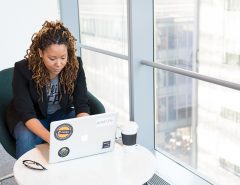Current Columbia game design major Dane Introduces a new method for connecting students to projects and opportunities:
To me (a game design major), the biggest selling point that determined my choice to attend Columbia was the student body. Faculty, resources, curriculum, facilities; those are all fine things to have in an institution of higher education. However, since creating a video game is typically not a one-person undertaking, I figured the key would finding out who my partners would be. I was worried that game design schools would have a pretty homogenous peer atmosphere – similar motivations, career paths, priorities, and tastes.
Now that I’m here, I’m finding out that students in other departments rely heavily on their classmates to get stuff done in their major. Fashion designers need models. Sound engineers need musicians. Screenwriters need directors. Directors need cinematographers.
And while I’m happy to find I’m in good company, when some friends and I decided to take the leap and actually start making a little game, we had a surprisingly hard time tapping into this RIDICULOUSLY COLOSSAL, UNHEARD-OF-ANYWHERE-ELSE wellspring of highly motivated artistic talent.
Our first stop was, as you can imagine, Talent Pool. Hey, great! A pool of talented people! What better place to find talent? And it was. We found our animator on there. We also got a sense for how committed and resourceful (and, well, talented) our schoolmates in other departments are. We ALSO discovered how busy and unavailable many of them were when contacted about our project.
Talent Pool puts you out there. Once you’re out there, you might feel ready to take on the world. We, the three people with the dinky student project, turned out to be small fare. For every Talent Pool profile listed as “available for collaboration”, there were about five listed as “available for internship/employment.”
So, to make a long story short, that’s why we started the Columbia Collaborative. We want to give students a resource for connecting over their independent projects. We want to be Columbia’s “Project Pool”.
When we first started talking about this, everyone said it was a wonderful, delightful, magical idea. A valuable tool, and one that Columbia was conspicuously missing. A simple message board where students could post anything from “NEEDED: BARITONE FOR BARBERSHOP QUARTET” to “LOOKING FOR ANYBODY DEDICATED TO CHALLENGING THE SYSTEMATIC IDEA OF BLACK WOMANHOOD, SEXUALITY, RELIGION, AND RACE.” Our goal was to provide something that would help students come together over their own ideas – something we wish we had when we were trying to form a creative team. We discovered very early on that you can know everybody in your department and half the rest of Columbia, and still be forced to grapple painfully with the notion that the right person for the job – somebody perfect for your project and desperate to collaborate – is somewhere out there on campus, an anonymous face in the crowd, and they might as well be a million miles away. It’s maddening.
So we became a club. Then we got funding, had an arts-and-crafts table at a couple events, and now we have our website. Things have gone smoothly. And why shouldn’t they? If Craigslist can do it, so can Columbia. Columbians, rather. However, the great uncertainty on the horizon is to what extent the tool will be used. The coming Fall semester will show whether this concept really is in high demand as we’ve been led to believe. Will it take off? Will it flop? It’s in the students’ hands now. There’s only one thing we’re sure of: the website can only thrive as a resource if everybody (EVERYBODY) at Columbia knows about it. So tell your friends!
The two examples listed above are taken directly from the official website of our organization, columcollab.net. Check it out, post a project, or see if there’s anything you want to get involved in! Let’s come together, and create.


